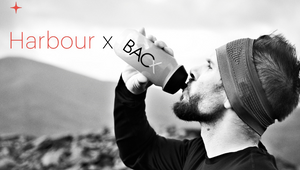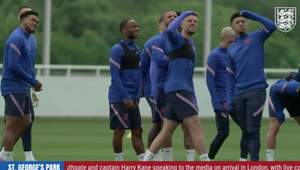
Why Cycling Brands Need to Gear Women up for a Better Ride in 2021

The bike boom has been one of the big trends of the last year's lockdowns. But when it comes to product design, women cyclists are being given a rough ride. That's the view of Harbour strategist Sara Barqawi, who sets out here why brands have a huge opportunity to shape culture and seize market share.
We’ve started 2021 in lockdown. Gyms shut. Transportation, discouraged. We want to go places, but we’re stuck in the malaise of a sedentary life. Things are particularly hard at the moment. The population is crying out for a fresh found optimism; a way to safely realise a new start without being followed by the spectre of paranoia. We need brands to kickstart a momentum, because we currently feel like we’re going nowhere anytime soon.
Those who could have slept walked back to their home desks. Many who need to have no way of safely getting around.
According to the ONS, 10.6 million Britons are classed as key workers. 58% of Britain’s key workers also happen to be women, and in London, women outweigh men in daily public transport use by 8%. There are fewer people on the streets, so here are fewer people to witness or help if an assault were to happen. These factors all put women in greater danger.
Aside from the odd catcall from the pulpits of a transit van, cycling now has the potential to be a Covid and (relatively) predator safe way of both exercising and getting around a city.
People found the joy of cycling in our first lockdown: there was a 60% uptick in bicycle purchases. It was an uptick so large that brands had to pause their advertising so they could supply the new demand. Veloretti even issued discount codes to compensate for their inability to fulfil new orders. Brands were largely dormant then. That’s all well and good when the weather’s nice.
Things are different this time: it’s much colder and wetter now than it was our first lockdown. Those bikes are now accumulating rust, dust and a touch of snow. Dormant fair-weather cyclists are crying out for brands to provide them with decent, affordable and acceptable looking cycle-wear.
The opportunity lies in creating a robust cycling culture for women
Why?
Designing for women in mind remains an untapped and fruitful opportunity. Women in particular have been neglected in the product design process, making cycling uncomfortable and even dangerous.
Male cyclists outnumber female cyclists three to one, even though cycling historically emancipated women by allowing them to get from A to B without relying on a man for the first time. Men are already well served.
Given that bike brands have caught up with manufacturing, now would be the perfect moment to stimulate demand for bikes, cycle equipment and accessories among women. Together, they have the potential to kickstart that momentum we’re craving. Bikes are the antidote to our stagnancy, and brands could win our hearts and minds by getting us moving again.
1. Poor Product Design
I learnt about poor product design the hard way - I tried to find waterproof over-trousers to keep my bottom half dry on my commute. Not only are they all rather hideous, they only widely come in ‘unisex’.
As a woman, I’ve got larger hips and shorter legs than the average man, so they just don’t fit. They’re uncomfortable to cycle in, I still get wet, and I also still look ridiculous. Unisex just means male.
Thankfully, the trousers’ main function is to keep me dry. If I were a female motorcyclist, the outlook would be far grimmer. As protective gear is largely made for men, I’d be unprotected: the parts that would protect your knees would probably be at my shins.
Small differences in products that are widely available can justify a whole new line when they address the needs of large groups of people. They can steal market share from other widely consumed products, in the same way that Lululemon et al stole from everyone who sold ‘casual’ trousers.
This isn’t unique to cycling. It’s everywhere.
Over 411 pages of Invisible Women, Caroline C. Perez outlines how women are seriously disadvantaged because of the male data bias. She cites examples such as cars being designed around the body of 'Reference Man', so although men are more likely to crash, women involved in collisions are nearly 50% more likely to be seriously hurt. Gender-blindness in tech culture produces what Criado Perez calls the ‘one-size-fits-men’ approach (which is exactly what happened with my trousers). The average smartphone – 5.5 inches long – is too big for most women’s hands, and when we have pockets, they rarely fit.
So, if we expect women to ride their bikes more often, we need to start designing equipment with women’s bodies and lifestyles in mind. That is: around their dimensions, lifestyles, and around the fact they may not all want to embrace looking ridiculous. This can all be remedied hiring women in product development and leadership teams.
1. The failure of Urban Planning
It’s not all about poor female product design, but also male-skewed town planning. UK roads are designed to prioritise cars. Men drive 30% more than women do.
On the whole, women are more risk averse than men. The fear factor that comes with a vehicle-centric infrastructure makes cycling less appealing. This fear increases when they’ve got to also transport children. You can see how risk might not add up.
More bicycle lanes are built when demand is created: this comes through cultivating a cycle culture. Oxford and Cambridge have this culture already. They exist because they’ve both got heavily pedestrianised city centres that make driving more difficult.
The role for brands
While city planning doesn’t sit in the remit for brands to directly influence, they still have room to make getting around on a bike more accessible to women. Brands can definitely get involved in the creation of a richer cycle culture, from nose to tail. Upstream product development and downstream communications could go a long way in being more inclusive.
We need to tailor and optimise what we make, for the many, and for those we’ve historically left out. This goes for cycling: whether it be a more ‘socially acceptable to wear’ jacket that doesn’t cost the earth, or waterproof over-trousers designed for women’s naturally wider hips.
The old ways won't cut it in a new normal. Cycling is just one thing. But all upstream thinking needs to work harder to include those previously excluded.













